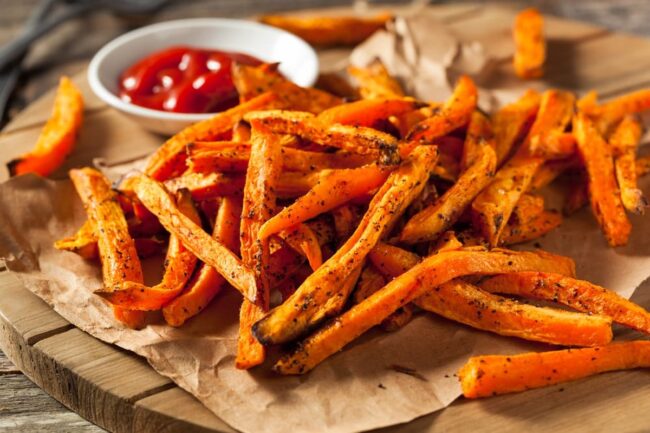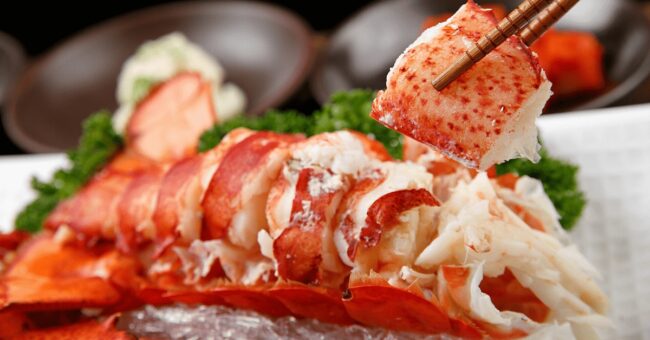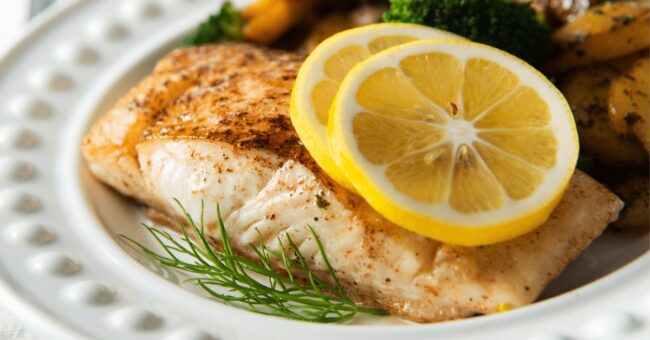6 Tasty Alternatives to Shrimp for Cooking
Shrimp substitutes keep dishes juicy and flavorful when this seafood staple isn’t an option.
Some choices deliver the same tender bite, while others introduce a firmer texture.
Sautéed, grilled, or tossed into pasta, the right replacement ensures every dish stays satisfying.
Matching the sweetness and texture makes a big difference in the final result.
Plant-Based Shrimp Alternatives
Vegetarian and vegan shrimp substitutes offer plant-based options with a similar texture and taste. They provide a great alternative for seafood dishes.
Tofu Alternatives
Vegan shrimp substitutes made from tofu stand out for their flexibility and appeal to many diets.
Often, rice is blended into the mixture to give it a satisfying texture that closely resembles seafood.
Seasonings derived from sea algae or seaweed enhance the flavor, bringing a taste of the ocean to every bite.
Additional ingredients like vegetable gums or starches help achieve an appealing look and feel, making these alternatives visually enticing as well as tasty.
This approach allows those following vegetarian or vegan lifestyles to enjoy dishes that resemble traditional seafood while staying true to their dietary choices.
Tofu's ability to adapt makes it an essential ingredient in plant-based cooking.
More Plant-Based Options
Sweet potato shines as a creative alternative for shrimp, thanks to its mild sweetness that mimics the taste of seafood.
King oyster mushrooms deserve recognition for their hearty texture, which closely resembles shrimp when cooked and seasoned properly.
These ingredients not only enhance dishes visually but also provide a satisfying bite.
Exploring these plant-based options can add variety to meals while supporting a vegan or vegetarian lifestyle.
Confidence in cooking with these substitutes allows for delicious and inventive culinary experiences that everyone can enjoy together.
Seafood-Based Shrimp Replacements
Seafood-based shrimp alternatives offer familiar flavors and textures for various recipes. They provide a sustainable and accessible substitute for traditional shrimp.
Crustaceans and Mollusks Alternatives
Crayfish, also called crawfish, taste similar to shrimp and can enhance various dishes with their unique flavor.
Lobster tails offer a rich alternative that pairs well in many recipes due to their sweet and tender meat.
Langostino tails provide a delightful sweetness, often used as a substitute for shrimp in cooking.
Scallops bring a mild sweetness and firm texture when cooked, making them an excellent choice for those who enjoy seafood.
Squid and cuttlefish have the ability to mimic the firmness of shrimp when prepared properly, adding variety to meals while maintaining that beloved seafood essence.
Fish That Look Like Shrimp
In seafood cooking, finding the right substitute can enhance a dish while maintaining its original character.
Monkfish, known as "poor man's lobster," offers a dense texture that mimics shrimp and works well in robust meals.
Firm white fish like cod or halibut also serves as an excellent alternative; these varieties can be chopped into pieces or shaped to echo the experience of shrimp.
Choosing substitutes like these not only preserves flavors but also adds exciting new textures to your plate.
A thoughtful selection of ingredients allows for creativity and satisfaction in every meal shared with loved ones.
Surimi and Processed Seafood Options
Utilizing surimi and other processed seafoods provides affordable and adaptable seafood alternatives. These options work well in sushi, salads, and seafood-based dishes.
Surimi: A Shrimp Substitute
Surimi offers an accessible option for anyone looking for a shrimp alternative.
Often made from white-fleshed fish like pollock, this fish paste includes additives that create a flavor and texture similar to shellfish.
Imitation crab meat is one of the most recognized surimi products, commonly found in sushi rolls and seafood salads.
Many dishes can include surimi, from dips to stir-fries, allowing everyone to enjoy flavors reminiscent of shellfish without the risk of allergies or high costs associated with real shrimp.
This versatility makes it a popular choice in various cuisines.
Imitation Shrimp and Alternatives
Technology and culinary creativity have led to the creation of shrimp substitutes that mimic the taste and texture of real shrimp.
Often labeled as vegan shrimp, these products use plant-based or protein-rich ingredients.
Many brands offer options that work well in traditional recipes, providing a comparable experience while being friendly for vegans or those with shellfish allergies.
When selecting these alternatives, consider both their environmental impact and dietary effects to find what best fits your cooking style and values.
Enjoying these innovative choices can add variety to meals while aligning with personal ethics surrounding food consumption.
Shrimp Allergies and Dietary Needs
Shrimp allergies and dietary needs require finding safe and nutritious alternatives. Plant-based and seafood-free options like mushrooms or tofu offer great replacements.
Effects of Shrimp Allergies
Allergic reactions to shellfish can be severe, particularly for those sensitive to crustaceans.
Shrimp ranks among the most frequent triggers in this group, posing risks that can range from skin rashes to serious anaphylactic responses.
Other crustaceans such as crabs and lobsters also contribute to allergies within this category.
Some individuals allergic to crustaceans may still eat mollusks like clams and oysters without issues, though caution is always wise.
Understanding these allergens helps manage dietary choices safely and effectively.
Awareness of potential reactions is essential for anyone with these sensitivities.
Food Choices and Limits
Many people choose not to eat shrimp for various reasons.
Ethical beliefs often guide vegetarians and vegans, leading them to avoid all animal products.
Health concerns can also play a role, as some individuals focus on lowering cholesterol or pursuing a plant-based lifestyle.
Vegetarians do not eat meat but may still include dairy and eggs in their diets.
In contrast, vegans eliminate all animal-derived foods from their meals.
Understanding these dietary choices helps clarify why shrimp is absent from many plates today.
Food Health Tips
Removing shrimp from meals can impact nutrition, making it essential to find suitable replacements.
Shrimp delivers high-quality protein that supports muscle growth and tissue repair.
It also contains omega-3 fatty acids, which are beneficial for heart and brain health.
Important vitamins and minerals like vitamin B12, iron, and zinc contribute to overall wellness as well.
Identifying alternative protein sources that fit dietary needs ensures a balanced intake of necessary nutrients.
Keeping nutritional balance in mind plays a vital role in maintaining good health without shrimp in the diet.
Cooking Methods and Recipes
Various cooking methods and recipes help bring out the best flavors in ingredient substitutes. Understanding techniques ensures a seamless transition in dishes.
Shrimp Dish Alternatives
Finding the right substitute for shrimp can enhance classic dishes while keeping their essence intact.
In Asian recipes or salads, tofu or tempeh works well, especially when soaked in soy sauce or fish sauce for added flavor.
For those who prefer meat options, diced chicken or pork fits nicely into stir-fries and noodle preparations.
When it comes to curry and paella, langostinos serve as a fantastic alternative with a similar taste and texture; just add them at the end of cooking to maintain their quality.
Firm-fleshed fish like cod can mimic shrimp’s texture in soups and stews; small pieces blend seamlessly into these hearty meals.
Surimi or sea urchin offers seafood flavor without using shellfish if that's preferred.
Ways to Add Flavor
Choosing the right shrimp substitute can lead to delightful results in your meal.
Bold seasonings such as paprika, chilies, or Cajun spices enhance milder alternatives and add depth to their flavor.
Fresh herbs like cilantro or parsley brighten up dishes with a burst of freshness.
A zesty lemon butter sauce made from melted butter, fresh lemon juice, and a touch of garlic complements many seafood substitutes perfectly.
Incorporating just a splash of fish sauce introduces that savory umami taste often linked with shrimp; moderation is key here for balance.
Thoughtful consideration of cooking methods and desired flavors will elevate your dish when using an alternative ingredient successfully.




